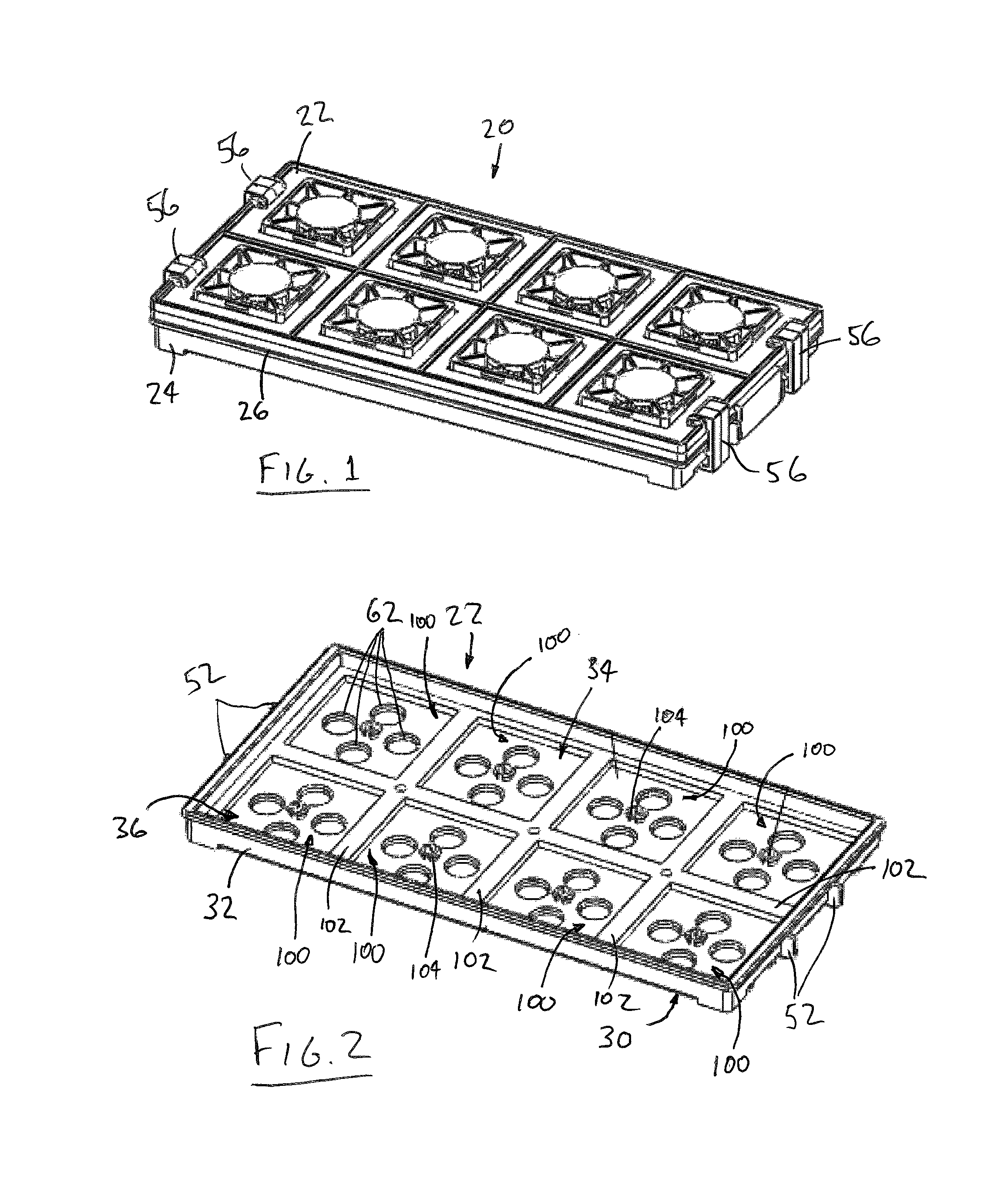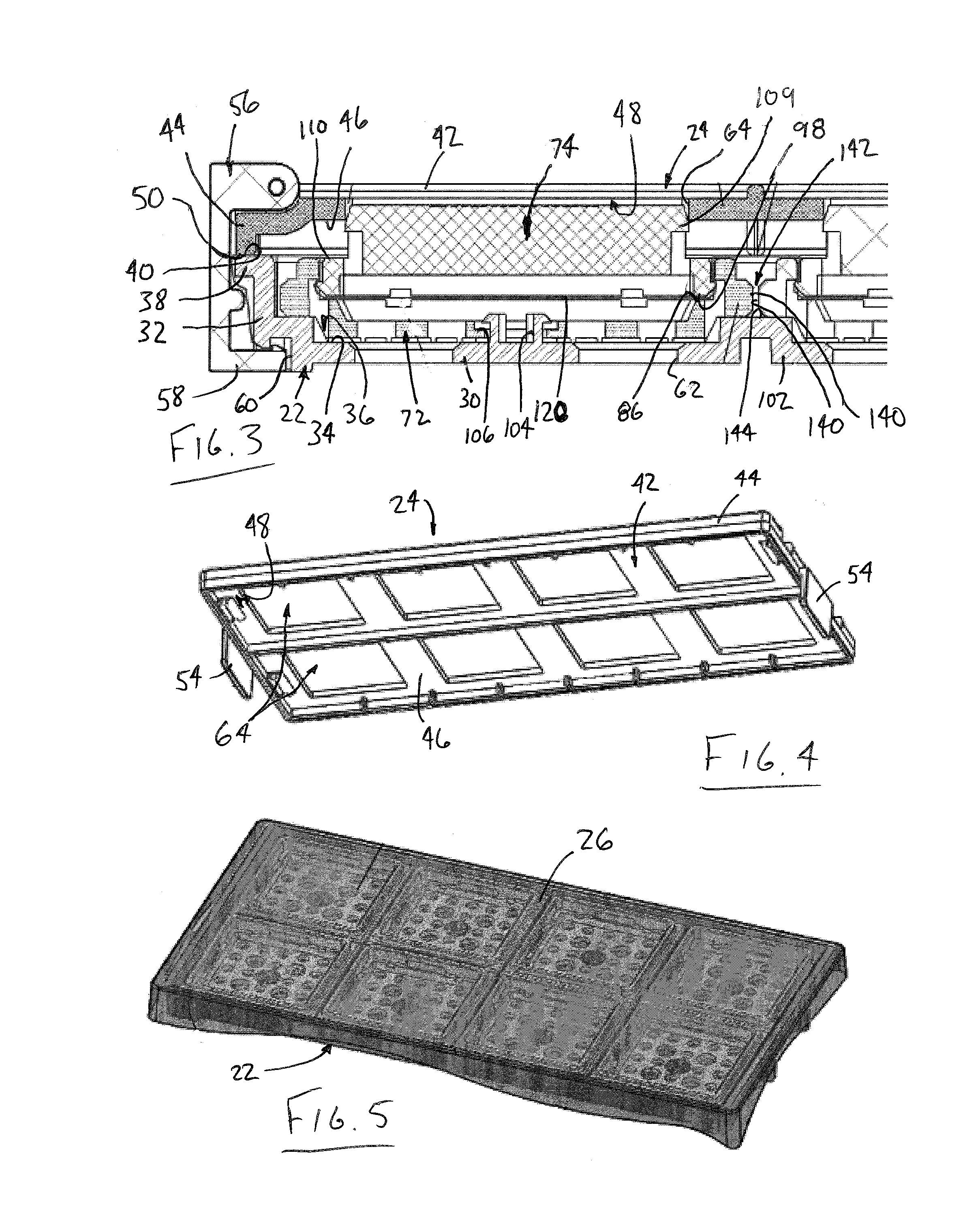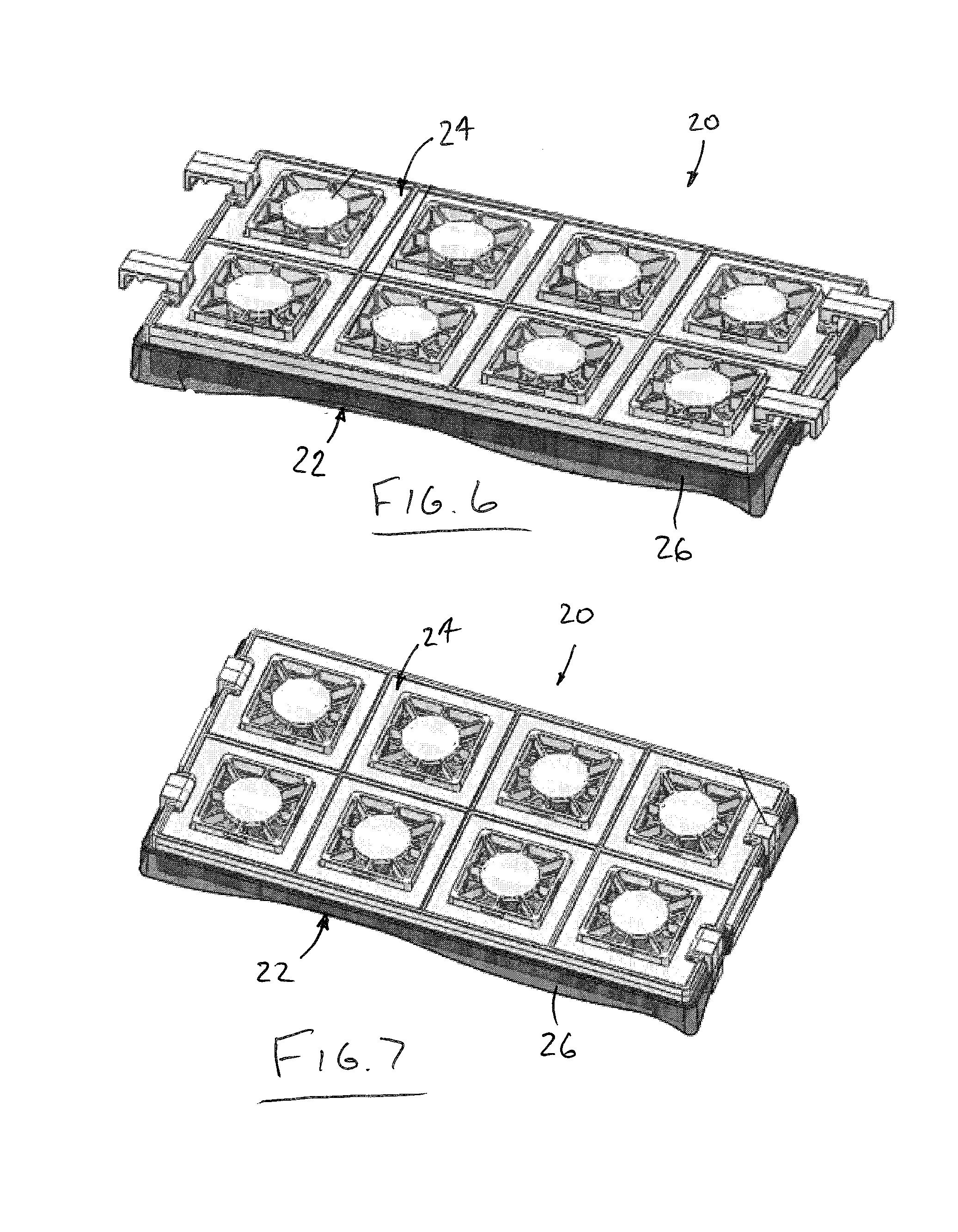Tissue retrieval, storage, and explant culture device for the derivation of stem cells
a technology of stem cells which is applied in the field of tissue retrieval, storage, and explant culture devices for the derivation of stem cells, can solve the problems of cellular viability, inconvenient inefficient retrieval and handling of amnion and chorion membranes, etc., to achieve convenient flow and intimate contact, simple and efficient separation, and easy separation of larger tissue samples
- Summary
- Abstract
- Description
- Claims
- Application Information
AI Technical Summary
Benefits of technology
Problems solved by technology
Method used
Image
Examples
Embodiment Construction
[0040]The methods and devices disclosed herein enable the successful retrieval of a large tissue sample from biological material in a sterile hospital environment. The tissue sample is captured with limited trauma and degradation to the material while encapsulating it for further transfer and ultimate preservation while in a living state. In particular, the methods and devices disclosed herein may be used to retrieve and preserve amnion tissue that is presented only during the birth of the species. A sample of living amnion tissue is deemed to comprise a highly beneficial population of stem cells, and can therefore be frozen in time to preserve cell viability for later utilization. The methods and devices disclosed herein may also facilitate cryogenic storage and return to maximum living cell viability.
[0041]Referring now to the drawings, FIG. 1 illustrates an embodiment of a tissue securing device 20. The issue securing device 20 may include a bottom platen 22 and a top platen 24. ...
PUM
 Login to View More
Login to View More Abstract
Description
Claims
Application Information
 Login to View More
Login to View More - R&D
- Intellectual Property
- Life Sciences
- Materials
- Tech Scout
- Unparalleled Data Quality
- Higher Quality Content
- 60% Fewer Hallucinations
Browse by: Latest US Patents, China's latest patents, Technical Efficacy Thesaurus, Application Domain, Technology Topic, Popular Technical Reports.
© 2025 PatSnap. All rights reserved.Legal|Privacy policy|Modern Slavery Act Transparency Statement|Sitemap|About US| Contact US: help@patsnap.com



